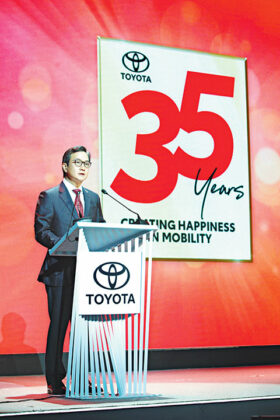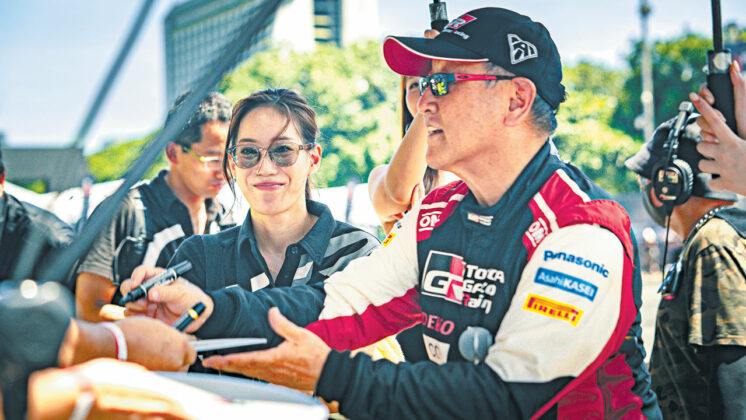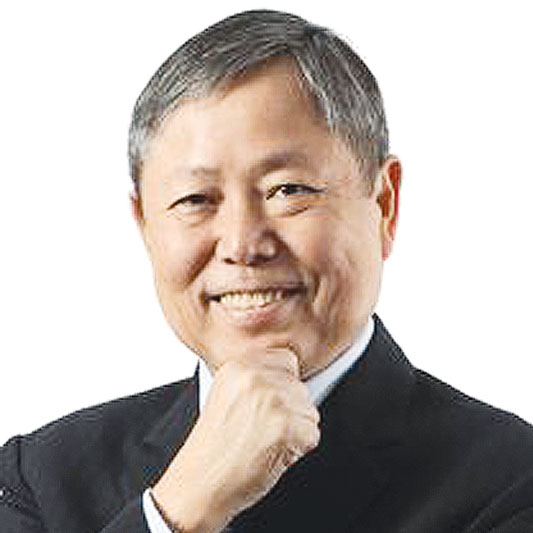Rustan’s Beauty Addict Event marks Beauty Hall opening
ON SEPT. 7, Rustan’s The Beauty Source presents the annual Beauty Addict Event, to be held in its newly revitalized Beauty Hall. Participating brands — Chanel, Clarins, La Prairie, Anastasia Beverly Hills, Tom Ford, MAC, La Mer, Clé de Peau Beauté, Shiseido, Hermes, Diptyque, Maison Francis Kurkdjian, L’Occitane, Grown Alchemist, Malin+Goetz, and L:a Bruket, among others — can literally be seen under a new light during the event. Interested parties may register for the Beauty Addict Event at bit.ly/RTBS-SeeingBeautyInANewLight. During the launch, there will be cocktails, roving interviewers, and photo opportunities with the Glam Bot, a high-definition, slow-motion camera that will highlight the guests’ beauty looks and styles up close. Guests can explore the new Beauty Hall and enjoy special offers, activities, and games from their favorite beauty brands during the event. There will be light installations and LED screens at the Beauty Hall. The Beauty Hall will be officially launched through a ribbon-cutting ceremony with Rustan’s executives followed by a dramatic reveal featuring the Halili Dance Group. Afterward, guests will be treated to a special performance alongside the Manila String Machine Orchestra together with Bea Tantoco. Capping off the night is an afterparty featuring live music by Renee Dominique and top DJs. The champagne bar is sponsored by Philippine Wine Merchants. Gourmet hors d’oeuvres will be catered by Margarita Fores. On Sept. 7 participating beauty brands will be offering one-day promos from midnight to 11:59 p.m. This applies to all Rustan’s stores, Personal Shopper On Call, and Rustans.com. Metrobank credit card holders who are also Rustan’s Beauty Addict Members, will get an additional P1,000 off on top of the existing Beauty Addict Event day promotions for a minimum purchase of P10,000. During the event, the first 100 guests to arrive at Rustan’s Beauty Hall will receive a two-sided Beauty LED Compact Mirror featuring a regular mirror, a magnified mirror, and LED lights that mimic sunlight. Guests who post their selfies on their socials during the event will also have the chance to win the “Best Selfie Award.” Each will receive a P10,000 shopping spree at Rustan’s The Beauty Source. Meanwhile, from Sept. 8 to 17, participating Rustan’s beauty brands will have another promo applicable to all Rustan’s stores, Personal Shopper On Call, and Rustans.com. Plus, from Sept. 1 to Nov. 30, Rustan’s will offer the Beauty Addict Holiday Gift With Purchase. For a minimum receipt purchase of P30,000, Beauty Addict members are entitled to a complimentary Make It Pop Floral Jewelry Box from Kate Spade New York. Running simultaneously is the Beauty Addict Holiday Raffle. The grand prize winner will get a three-night stay for two at an exclusive hotel in Paris, France inclusive of Singapore Airlines KrisFlyer miles, redeemable for a Business Class Saver Award ticket to Paris, France. For every purchase of P2,500 worth of products and services from Rustan’s The Beauty Source, Beauty Addict and KrisFlyer members are entitled to one electronic raffle entry, while Metrobank cardholders, who are also Beauty Addict and KrisFlyer members, are entitled to two electronic raffle entries when they shop until Nov. 30.
Magnitude 9.9 Super Sale at the Paseo Outlets
THE PASEO Outlets at Greenfield City is gearing up for the Magnitude 9.9 Super Sale on Sept. 8 to10. Discounts can be as large as 70% off, with discounts on top of discounts on already on-sale items. Among the participating brands are 158 Designer Blvd. (buy two sale items, get an additional 10% off from Tommy Hilfiger), American Eagle Outfitters Outlet (buy 1 get 1), Bench Depot (Cotton On, Call it Spring, Kashieca, La Senza, and Pedro), BrandSmart, Crocs Outlet, Levi’s Factory Outlet, Marks & Spencers (buy two or more, get 20% off), along with sportswear and shoe brands Under Armour, Merrell, No Fear, Oakley Vault Saucony, and Skechers, adidas, Puma (Buy 2, Get 3), the Nike Factory Store, and Park Outlet (up to 70% off on Nike, Jordan, Puma, New Balance, Converse, Havaianas). Don’t miss multibrand stores The Outlet with Banana Republic, Gap, and Old Navy, Fusion (up to 70% off on Merrel, Keds, Sperry) Time Collection Outlet Store and USDS Outlet. At F&F, get Calvin Klein items at up to 50% off. The Paseo Outlets is located along Tagaytay Balibago Rd., Greenfield City, Sta. Rosa, Laguna.
Uniqlo collaborates with KAWS on T-shirts and more
UNIQLO will simultaneously launch the definitive book on the renowned contemporary artist KAWS, and a new UT T-Shirt collaboration collection with the artist, on Sept. 8. Both the new UT collection and the art book — launched exclusively with Uniqlo and publisher Phaidon — will be available at Uniqlo stores globally and through uniqlo.com. Designs in the collection of T-shirts and sweatshirts will feature KAWS’ signature COMPANION and BFF characters (the latter in bright pink), the cover of the new book, as well as the artist’s iconic XX motif. Items will be available in adults’ (unisex) and kids’ sizes. Additionally, Uniqlo will also offer a range of limited-edition gifts for customers purchasing the art book and UT collection. To celebrate the collaboration, some of the largest Uniqlo stores around the globe will be wrapped in designs featuring KAWS’ characters. The three adults T-shirt designs (P790), two adults sweatshirt designs (P1,490), three kids T-shirt designs (P590), two kids sweatshirt designs (P990), and the KAWS Art Book (P3,490) will be available at Uniqlo stores around the Philippines and uniqlo.com. The kids’ items only available at stores with kids’ sections, as well as on UNIQLO.com Special site: https://www.uniqlo.com/ph/en/contents/feature/kawsut2023/
Old Navy holds pants sale
OLD Navy will be holding the Very Important Pants sale from Sept. 15 to 17, with a Buy 1, Get 1 Jeans and Long Pants offer and 40% off on two or more regular-priced items. Old Navy VIPs can enjoy the same Buy 1, Get 1 offer and 50% off on regular-priced items during the VIP preview starting Sept. 11 to 17 at Old Navy Shangri-la, Bonifacio High Street or oldnavy.com.ph. Old Navy’s bestselling women’s jeans use innovative technology that features the Never-Quit Shape Retention and the latest stretch fabric making it easy to move in without bagging or sagging at the end of the day. There will be extra high-waisted wide-leg trouser jeans (online exclusive), high-waisted jeans, 1990s-inspired baggy wide-leg non-stretch jeans, and mom jeans, to ripped jeans and acid-wash jeans. There are also non-stretch jeans for women, made from 100% cotton. For men there are the classics: straight jeans, as well as fashion-forward baggy, loose, and slim jeans, crafted with high-quality denim that offers both durability and comfort. Most feature 360° super stretch tech for maximum comfort. There are also jeans for girls and boys. Old Navy makes its jeans eco-friendlier as well, using more recycled cotton and less water in the production process to create jeans that are more sustainable. Aside from classic styles, like chino pants to trendy joggers, and cargo pants, Old Navy has athletic pants and powersoft legging for yoga, workouts, and at the gym.
Michael Cinco to hold Metaverse Fashion Gala
INTERNATIONALLY renowned Filipino fashion designer Michael Cinco will bring his couture to Philippine Blockchain Week (PBW) in the country’s first-ever Metaverse Fashion Gala. Taking place on Sept. 18 at the Marriott Grand Ballroom, Newport World Resorts Manila, the event will redefine how audiences see digital fashion. “Fashion has always been about redefining barriers, and right now, there’s no bigger barrier than taking what’s physical into the digital,” said Mr. Cinco in a statement. “I’m excited to be partnering with PBW and even more excited for everyone to see what we have planned.” At the Gala, collectors will see a showcase of signature Cinco pieces, while the runway models’ avatars will be shown wearing the same outfits in the Metaverse. Fashion collectors will be invited to take home their favorite pieces, which will be made available for purchase through an exclusive pre-sale, which — in addition to the actual gowns — will come with special edition digital collectibles. PBW delegates will be treated to an exhibit of Michael Cinco gowns, which will be exhibited throughout the PBW venue. Part of the proceeds from the Michael Cinco Metaverse Fashion Gala will benefit the World Wildlife Fund for the conservation of endangered species, and the Global Reskilling Movement, an international initiative devoted to providing better opportunities for the youth. Tickets for the Michael Cinco Metaverse Fashion Gala, which include pre-show cocktails and a five-course dinner are on sale now. For reservations or more information, visit pbw.ph/mc or e-mail info@pbw.ph.
Red Charity Gala is back with Ivarluski Aseron
AFTER a three-year hiatus due to the pandemic, the fashion and charity event, the Red Charity Gala, returns on Oct. 8 at The Peninsula Manila. It will feature designer Ivarluski Aseron. Launched in 2009 by philanthropists and socialites Tessa Prieto and Kaye Tinga, the Red Charity Gala was organized to benefit The Philippine Red Cross, a non-profit humanitarian organization, and the Assumption HS81 Foundation, among other chosen beneficiaries. Every year, the Red Charity Gala features collections from famed local fashion designers such as Rajo Laurel, Joey Samson, Chito Vijandre, Lesley Mobo, Jojie Lloren, Ezra Santos, Cary Santiago, Michael Cinco, Furne One and Dennis Lustico. This year, it turns the spotlight on Ivarluski Aseron. In his latest collection, he paid homage to the Philippine culture with his modern takes on the Filipiniana incorporating the basket weaving technique typical of the banig. The designer has gained numerous accolades including Fashion Designer of the Year for Evening Wear at the Mega Fashion Awards 2008 and Revolutionary Designer of the Year at MTV 2004. He has participated in many local and international fashion weeks including Bali Fashion Week in 2007, Kuala Lumpur Fashion Week in 2005/2007 and Philippine Fashion Week from 2002 to 2005. For this year’s Red Charity Gala, Mr. Aseron’s collection will center on the theme “A Memoir in Motion.” For updates, follow Red Charity Gala on Instagram (@redcharitygala) and contact Maggie Gineta at 0917-832-5570 for other information.
BTS’ Suga, Mitchell & Ness collaborate on NBA collection
THE NATIONAL Basketball Association (NBA) and Mitchell & Ness have announced a new NBA capsule collection in collaboration with NBA Ambassador and BTS star Suga. The South Korean rapper, songwriter, and producer provided extensive creative input on the apparel line, which features NBA team-branded T-shirts, hoodies, jackets, shorts, and headwear across six NBA teams: the Brooklyn Nets, Chicago Bulls, Golden State Warriors, LA Clippers, Los Angeles Lakers and New York Knicks. The teams were selected based on the US cities where Suga performed as part of his recent solo world tour SUGA | Agust D TOUR ‘D-DAY’. The new SUGA x NBA capsule collection by Mitchell & Ness is marked with Suga’s Agust D moniker to signify his relationship with the NBA and also incorporates several design motifs inspired by his album D-DAY. The collection will be available in the coming weeks through select brick-and-mortar and online NBA Stores, Mitchell & Ness stores, and the Weverse Shop. Interested parties can visit www.nba.com/SUGAxNBA to register their interest with an NBA ID and gain access to early purchase information.
Adidas introduces Switch Fwd
ADIDAS has released its latest running shoe, Switch Fwd, constructed using cutting-edge design processes. The shoe’s engine — the EVA compound midsole — features intricately designed voids that collapse and spring forward, converting weight into forward motion, unlocking the potential of athletes of all levels by moving them forward with every stride. The result is a smooth-running experience that’s unique to forward technology-fueled running shoes. The soft EVA compound midsole, working in unison with the TPU plate, ensures a stable and cushioned transition through the forefoot and midfoot during the forward motion process. Additional features of the new Switch Fwd include a lightweight Continental outsole, which gives runners extra grip in all weather conditions; and a lightweight engineered mesh upper, which features strategically placed windows on the forefoot and midfoot for enhanced breathability. The shoe launches in a primary white and silver-violet colorway with lucid lemon detailing for women, and a primary white and wonder blue colorway for men with lucid lemon accents. The Switch Fwd is priced at P8,500, and is available via the adidas app, online https://www.adidas.com.ph/running and in stores.
Ever Bilena launches Matte K-Beauty collection
TO HELP fans achieve a K-inspired look, Ever Bilena has launched its newest Matte K-Beauty collection lipsticks. The lipsticks come in a lightweight formula and are infused with sunscreen filter and vitamin E for moisturized and protected lips. This matte K-Beauty collection quickly delivers vivid pigmented colors in just a few swipes. It features six colors inspired by trendy Korean shades: Daily Coral (similar to Etude Fixing Tint in BT21 RJ), Auburn Delight, the Paradise Nude, Maple Candy, Sweet Pea (a deep muted pink with a cool undertone), and Marshmallow Berry (similar to Peripera Ink Velvet in 28 Mauveful Nude, a cool-toned purple nude lip shade). The newest Ever Bilena Matte K-Beauty collection is available for P225 per lipstick. Ever Bilena products can be purchased on their official Shopee and Lazada stores, Watsons branches nationwide, and all leading department stores nationwide.



























